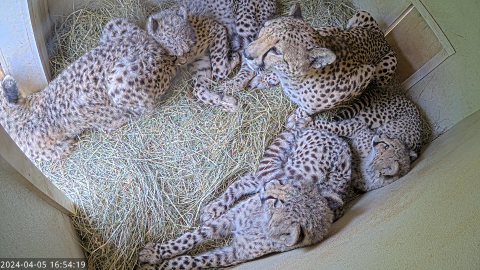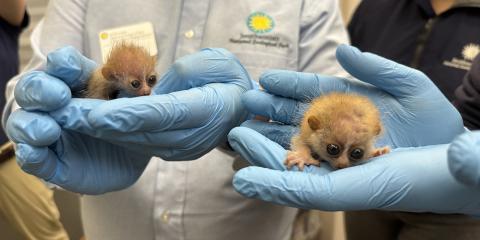Physical Description
Chachalacas are long-tailed, round-bodied birds that are roughly the same size and weight as a pheasant. They have small heads, bare legs, and tails with white tips. Adults have light brown feathers on their chests and dark brown feathers on their backs and necks. Unlike many tropical bird species, males and females can be difficult to tell apart.
Size
Adult chachalacas can reach up to 19-23 inches (48–58 centimeters) tall, and weigh between 1 and 1.8 pounds (0.5-0.8 kilograms). Females are a little heavier than males.
Native Habitat
Chachalacas live in areas with lots of vegetation, like forests and brushlands, where their brown coloring helps them blend into their environment. They can also be found in rainforests, highland areas, coastal scrublands and maritime forests. These birds are native to Belize, Costa Rica, Guatemala, Honduras, Mexico, Nicaragua, and the southernmost part of Texas.
Lifespan
They can live up to 8 years in the wild.
Communication
Chachalacas are known for their loud and raucous calls, which sound like "cha-cha-LAW-ka". These calls typically occur early in the morning or evening. Groups will often deliver these calls together, taking turns and singing in rounds.
Food/Eating Habits
Chachalacas are omnivores, and forage for food in small groups. They have a wide and varied diet, and eat invertebrates (like caterpillars, beetles, tiny snails, and grasshoppers), fruits, and plant material, such as trees, flowers, buds, and leaves. When foraging in trees, they will use their long necks and feet to grip the nearest branch and stretch out to reach out-of-the-way fruits and buds. They can even hang upside down.
Social Structure
During the breeding season, chachalacas form family groups made up of a pair of adults and their recent offspring. As a defensive mechanism, these groups will crowd predators, like large owls and small mammals, calling out loudly as an intimidation tactic. When the offspring reach maturity, these groups will usually merge with larger flocks.
Reproduction and Development
Breeding season occurs in the sprint. Male and female chachalacas perform courtship rituals before nesting; males will often present females with a piece of fruit, and the pair will use their beaks to clean each other’s feathers. After breeding, males and females form simple nests in hard-to-reach places like tree forks or dense thickets. Females usually lay between 2 and 4 buffy white-colored eggs, which she incubates for about 25 days. During this time, males guard females and chase away other males from the nest. After they emerge from their eggs, hatchlings are cared for by both parents and stay under their supervision for about nine months, or until they are almost fully grown.
Conservation Efforts
As a species, plain chachalacas are not considered threatened. However, threats like habitat loss and environmental degradation have put local populations at risk. Overhunting poses a threat to these birds in many parts of their range. There are fewer than 2,500 plain chachalacas in the United States, nearly all of which live in protected parks and wildlife refuges.
Help this Species
- Be a smart consumer. Choose products made with sustainable ingredients, such as Smithsonian certified Bird Friendly coffees, which support farmers striving to limit their impact on wildlife and habitat.
- Practice ecotourism by being an advocate for the environment when you’re on vacation. During your travels, support, visit or volunteer with organizations that protect wildlife. Shop smart too! Avoid buying products made from animals, which could support poaching and the illegal wildlife trade.
- Be a responsible cat owner, and keep cats indoors or under restraint when outside. Never release animals that have been kept as pets into the wild.
- Are you a hunter? You can be an incredible ally for conservation! Check the conservation status of the animals you hunt and use methods that don’t impact other animals.
- Are you a student? Did you love what you learned about this animal? Make it the topic of your next school project, or start a conservation club at your school. You'll learn even more and share the importance of saving species with classmates and teachers, too.
- Plant native flowers in your garden to help feed resident and migrating pollinators. You'll make your lawn beautiful and help wildlife at the same time!
- Share the story of this animal with others. Simply increasing awareness and educating others about the threats invasive species pose to local ecosystems can help protect native environments.


